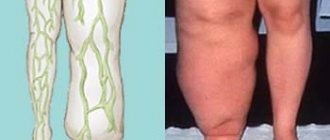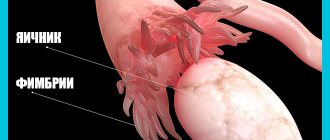Parotitis is an inflammation of the parotid gland.
Among the causes of mumps development, the mumps virus ranks first. Inflammation of the parotid gland can also be caused by injuries, hypothermia, and the spread of infection from wounds located in the oral cavity.
The main manifestation of mumps is a painful increase in the size of the salivary glands. With a significant increase in the parotid gland, one can externally determine the increase in size of the face (namely the cheeks). There are difficulties with chewing. General weakness, increased body temperature, headache, and loss of appetite may also appear.
Mumps is fraught with the development of serious complications:
- orchitis with subsequent infertility;
- meningitis, meningoencephalitis, myocarditis, arthritis, pancreatitis;
- deafness.
Acute mumps
There are also acute and chronic mumps. Acute inflammation corresponds to primary infection and is usually caused by a single pathogen.
Acute mumps of viral origin is most often caused by the mumps virus . Bacterial acute parotitis develops as a result of activation of bacterial microflora in the oral cavity, in the ducts of the salivary gland.
The cause of acute bacterial parotitis can be a violation of the secretion of saliva in the parotid gland.
According to the forms of occurrence, they distinguish between serous acute parotitis, purulent, and gangrenous. With serous mumps, the salivary gland tissues swell and secretions accumulate in the excretory ducts.
Stagnation of saliva promotes the activation of microflora. Little saliva is secreted, the skin over the gland is not changed, the patient's condition is usually satisfactory.
The next stage of the inflammatory process is purulent parotitis . At this stage, areas of purulent melting of the gland tissue appear.
The skin over the gland becomes inflamed, red, and shiny. It is painful for the patient to open his mouth; upon palpation the gland is dense and sharply painful.
As the purulent process spreads, acute otitis turns into a gangrenous form, in which purulent melting of tissue covers the entire gland. After the breakthrough of purulent foci, fistulas are formed, through which necrotic tissue is removed.
Perhaps you were looking for information on acute otitis media? Read in detail in our next article Acute otitis media in a child: causes, symptoms, treatment.
Possible complications and consequences of mumps
Mumps is a fairly well-known disease, but not only due to its highly pronounced symptoms and signs, but also to its complications, which sometimes lead to serious consequences for human health. And first of all, mumps poses a danger to boys and members of the male population.
Experts identify the following possible complications of the disease:
- infertility caused by testicular atrophy, orchitis. The risk of this complication increases with age;
- deafness, which may occur due to damage to the middle ear;
- diabetes;
- disturbances in the functioning of the central nervous system;
- serous meningitis;
- thyroid diseases;
- pancreatitis;
- dysfunction of the pancreas.
Despite the fact that mumps is not a serious disease, it can cause serious complications. If the patient's condition worsens, orchitis (in men), mastitis (in women), encephalitis may occur, and in the worst case, irreversible deafness and infertility develop. An equally serious complication of mumps is meningitis, in which the disease is extremely severe and recovery does not take a long time. Various tissues and organs (ovaries, mammary glands, pancreas) are affected by the virus.
Chronic mumps
It usually occurs as a primary disease; it is rarely a complication of acute mumps. Chronic mumps is a manifestation of Sjogren's syndrome or Mikulicz syndrome.
Sjögren's syndrome is an inflammation affecting the mucous membranes , characterized by a decrease in the secretion of mucous glands. With Sjögren's syndrome, dry eyes and oral cavity are observed due to lack of saliva and tear fluid.
Mikulicz syndrome manifests itself in an increase in the volume of the salivary glands , an increase in saliva secretion. Swelling of the glands can reach such a size that it interferes with talking and eating.
Swelling of the salivary gland and bursting pain are observed in chronic sialodochitis. Changes are also observed in the ducts of the gland, accompanied by the release of secretion with lumps of mucus.
Chronic mumps manifests itself in the proliferation of connective tissue, replacement of glandular tissue, and decreased salivary secretion. Symptoms of chronic mumps are mild, and the disease is often asymptomatic.
During exacerbations, dry mouth, swelling of the gland, and the release of saliva with pus when massaged are noted.
The occurrence of chronic mumps is associated with metabolic disorders; the disease occurs with periodic exacerbations and does not cause severe complications.
Features of the mumps virus
Cases of mumps have been known since the fifth century BC. In the twentieth century, it was possible to identify the features of the viral nature of the disease:
- The virus is destroyed by ultraviolet exposure, boiling, and disinfection treatment.
- Low temperatures allow the virus to remain active for a long time.
- The spring months are the breeding season for viruses.
- Cases of secondary infection with mumps are rare.
- A typological feature of viral mumps is the formation of swelling of the salivary glands. There are cases of asymptomatic disease.
- The disease mumps affects children aged thirty-six months to fifteen years and adults.
- Boys are most susceptible to contracting mumps.
Mumps - mumps
The disease is caused by the filter paramyxovirus Mamps virus . The infection mainly affects children from 3 years to 16. Boys get sick twice as often as girls.
You can get mumps at any age, but much less frequently. Men get sick more often than women; in adults, mumps is especially severe, with serious complications.
You can only get infected from humans; animals are not carriers of the virus. Infection occurs through airborne droplets when sneezing or talking.
Colds and flu increase the contagiousness of mumps, which is why the disease is seasonal. Outbreaks of mumps occur during the cold season.
According to the ICD 10 classification of diseases, mumps is classified as an acutely contagious disease. A person with mumps is dangerous to others on the second day after infection, during illness, and for another two weeks after recovery.
With mumps there is no purulent tissue inflammation. The virus that causes mumps is unstable and loses activity when exposed to ultraviolet light, heat, or treated with Lysol or formaldehyde.
After suffering from mumps, immunity is developed. The incubation period ranges from 13 to 19 days, deviations are 3-4 days.
Mumps symptoms
The disease does not make itself felt immediately, so many people who become infected simply do not know that they are developing mumps. The disease, the symptoms of which are very similar in adults, has an incubation period of 10 days to 3 weeks.
3-4 days before the infection begins to progress in the body, patients notice the following symptoms:
- periodic headache;
- muscle spasms and joint aches;
- chills;
- severe dryness in the mouth.
Following the first unpleasant manifestations, the acute course of the disease begins. It is often characterized by symptoms such as:
- high body temperature (often above 38°C and lasts for at least 5-7 days);
- systematic pain in the head;
- weakness;
- inflammation and swelling of the salivary glands;
- swelling of the glands located under the jaws and under the tongue.
The main sign that allows you to detect mumps in an adult is swelling of the parotid glands, giving the face a pear shape. You can often notice that the earlobe on the affected side rises slightly. After 1-2 days, the infection can spread to the opposite side, but in most cases the inflammation is one-sided.
Symptoms
The first symptom of mumps is stomatitis - inflammation of the oral mucosa. Precursors of mumps include muscle pain, chills, a feeling of weakness, and headache.
Inflammation of the parotid saliva gland, caused by injury, blockage of the salivary duct, is accompanied by salivary colic - paroxysmal pain in the gland area.
Signs of infection of the salivary glands include pain when chewing and pain behind the earlobe.
Almost immediately, swelling appears on one side of the face, the temperature rises above 38 degrees, and the earlobe protrudes.
On palpation, pain is noted in front of the tragus of the ear, in the postauricular area, at the edge of the lower jaw. Characteristic symptoms of mumps are pain when chewing, dry mouth.
Changes in the gastrointestinal tract, heart, nervous system, and eyes are observed.
Depending on the degree of damage to the target organ, the following are noted:
- loss of appetite, negative attitude towards spicy seasonings in food, vomiting, nausea, constipation or diarrhea (in children);
- shortness of breath, palpitations, chest pain;
- meningitis, asthenia, mental disorders;
- inflammation of the optic nerve, inflammation of the lacrimal gland, otitis.
Mumps or mumps. Treatment of mumps in children. Clinic, symptoms, complications
Successful treatment of mumps in children is directly dependent on early diagnosis of this disease. This disease affects people aged 1 to 40 years who are not vaccinated and have not previously suffered from this disease. The transferred mumps develops lasting immunity. The route of transmission of mumps is airborne; it is also possible that infection can be transmitted by contact through household items, clothing, personal belongings, and toys of sick children. The incubation period for mumps is 12 to 24 days. Patients are infectious to others two days before the clinical picture of the disease develops, and during the first five days after the clinical picture develops. It is worth noting that the older the sick person, the more severely he will suffer from mumps. Symptoms of this disease This disease begins acutely. The main symptoms of mumps are: • Increased body temperature up to 40 degrees; • Weakness and headache; • Increased salivation; • Painful sensations in the ear areas, which intensify during chewing or swallowing; • Inflammation of the parotid salivary glands (flux); • Increased tension and glossiness of the skin over the inflamed gland; • The glands increase to enormous sizes in three days, their swelling persists for up to 10 days. This clinical picture is classic for epidemics. mumps. Sometimes in rare cases, inflammation of the salivary glands does not develop with mumps, then it is difficult to diagnose this disease. Complications during epidemiological mumps: • Lesions of the pancreas in the form of acute pancreatitis; • Lesions of the genitourinary area in the form of orchitis in boys, and oophoritis, oophoritis in girls; • The most terrible complication after suffering from mumps is male infertility; • Possible development of meningoencephalitis; • Development of deafness or some hearing loss. Prevention and treatment of mumps The main preventive measure to prevent such a severe infection is vaccine prevention. Our country has developed high-quality vaccines against mumps that can reliably protect your baby from infection, or can weaken the course of the disease and prevent the risks of developing possible complications. Treatment of mumps in children consists of keeping the patient in bed, isolating him and symptomatic treatment. In recent years, the antimicrobial and antiviral drug Biofon has proven itself to be very effective. Its use in the treatment of mumps prevents the development of complications. Treatment of mumps in children must be accompanied by plenty of fluids and fortified foods. Drinking should be frequent and plentiful (fruit drinks, jelly infusions, juices). An adult child needs to limit his diet to foods that cause fermentation in the intestines (bread, pasta, fiber-rich vegetables) and fatty foods. After each meal, you must rinse your mouth thoroughly.
Diagnostics
Mumps is diagnosed using radiosialography, a method that allows one to evaluate the functioning of the salivary gland. In the diagnosis of mumps, ultrasound examination of the parotid gland and cytological analysis of the composition of saliva are used.
To confirm mumps, testing is carried out in specialized in vitro laboratories - from lat. names in vitro, which means “outside the living.”
A specific test for mumps consists of determining the presence of IgM and IgG. IgM is detected as early as the third day after infection, sometimes before symptoms of mumps appear.
IgG is found in the blood after mumps symptoms appear. A level of IgG sufficient to maintain lifelong immunity is maintained throughout life.
Mumps is differentiated from false mumps - Herzenberg's pseudomumps. This disease affects the lymph nodes inside the salivary gland. The ducts of the salivary gland and its tissues are not involved in inflammation.
What is a pig?
Mumps or mumps is an acute infectious and highly contagious disease caused by a virus of the paramyxovirus group, characterized by inflammation of the salivary glands (most often the parotid glands). Inflamed glands swell, become painful and put pressure on surrounding tissues. A child who has recovered from mumps acquires lifelong immunity. Secondary infections occur in very rare cases. Mumps is one of the classic childhood diseases. It is distributed throughout the world and often affects children at almost any time of the year. Most often these are children aged 4-10 years, and according to statistics, boys suffer from mumps more often than girls. Adults can also become infected with mumps, especially if they are not vaccinated or did not have it as a child.
Treatment
Mumps can be treated at home. The patient must be isolated for the duration of treatment; quarantine in children's institutions if mumps is detected is three weeks.
Disinfection is not carried out for infectious mumps; to prevent complications, the patient must remain in bed for at least 10 days. Mild dehydration therapy, dairy cuisine, and a gentle diet are indicated.
Non-epidemic and mumps are treated conservatively and with surgery. Conservative treatment includes frequent rinsing of the mouth with water acidified with lemon juice and a diet that includes foods that cause active salivation.
Read more about the procedure for rinsing your mouth using the example of our article Rinsing your mouth with chlorhexidine.
At the same time, the patient receives drops of a 1% solution of pilocarpine - 8 drops per meal for breakfast, lunch and dinner. Sulfonamides and penicillin antibiotics are prescribed. The salivary ducts of the gland are washed with chymotrypsin.
Warming compresses are applied to the gland, irradiated with ultraviolet light, and UHF therapy and Sollux are used.
Interferon is used to treat mumps. It is administered intramuscularly once a day for 10 days. The oral cavity is irrigated with interferon several times a day and general restorative therapy is carried out.
For purulent mumps, if there is no positive result of treatment with drugs, they resort to surgery.
The patient is made two incisions to cleanse the tissues of pus:
- an incision of the skin and subcutaneous tissue on the posterior edge of the lower jaw;
- along the cheekbone.
Evacuation of pus improves the patient's condition, inflammation stops. In weakened patients, it is not always possible to stop the process even after surgery.
When inflammation spreads to the neck tissue, the temperature continues to remain high, and the patient is at risk of sepsis.
Complications
In children, a complication of mumps may be inflammation of the testicles in boys with possible atrophy and infertility subsequently.
In girls, inflammation of the ovaries and mastitis are possible. Mumps during pregnancy can cause the death of the child and its infection.
Mumps is severe in adults, complicated by meningitis, diabetes, infertility, and deafness.
In acute purulent mumps, there is a danger of purulent melting of large blood vessels, inflammation of the facial nerve and partial paresis of the facial muscles. Pus can break into the ear canal and cause thrombosis of the jugular vein.
How is diagnostics carried out?
With the classic course of mumps in an adult, there is no need to carry out a special examination. In atypical, exceptional cases, for example, in the case of a severe course of the disease or a previously vaccinated person being infected with mumps, a diagnosis is carried out. It includes examination of pharyngeal swabs, analysis of blood, urine, saliva and cerebrospinal fluid. Based on the results, the doctor makes a diagnosis.
Mumps in children is often diagnosed based on visual examination. But since swelling of the ear area can be caused not only by this disease, but also by a number of others, a number of studies will be required to make an accurate diagnosis.
In addition, mumps in children sometimes occurs in a sluggish form or without any symptoms at all, which makes it difficult to identify the disease.
To make a diagnosis, studies such as:
- collecting anamnesis and clarifying the possibility of contact with patients;
- a general urine test, but it will only reveal the presence of infection in the body, for this reason it is not informative;
- a bacteriological method for examining saliva and urine, but this analysis is informative only in the last days before the onset of symptoms and 4 days after their onset;
- immunofluorescent analysis, which is the most informative.
As additional research methods, instrumental methods for identifying affected organs are used.












